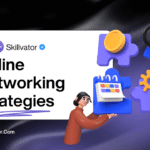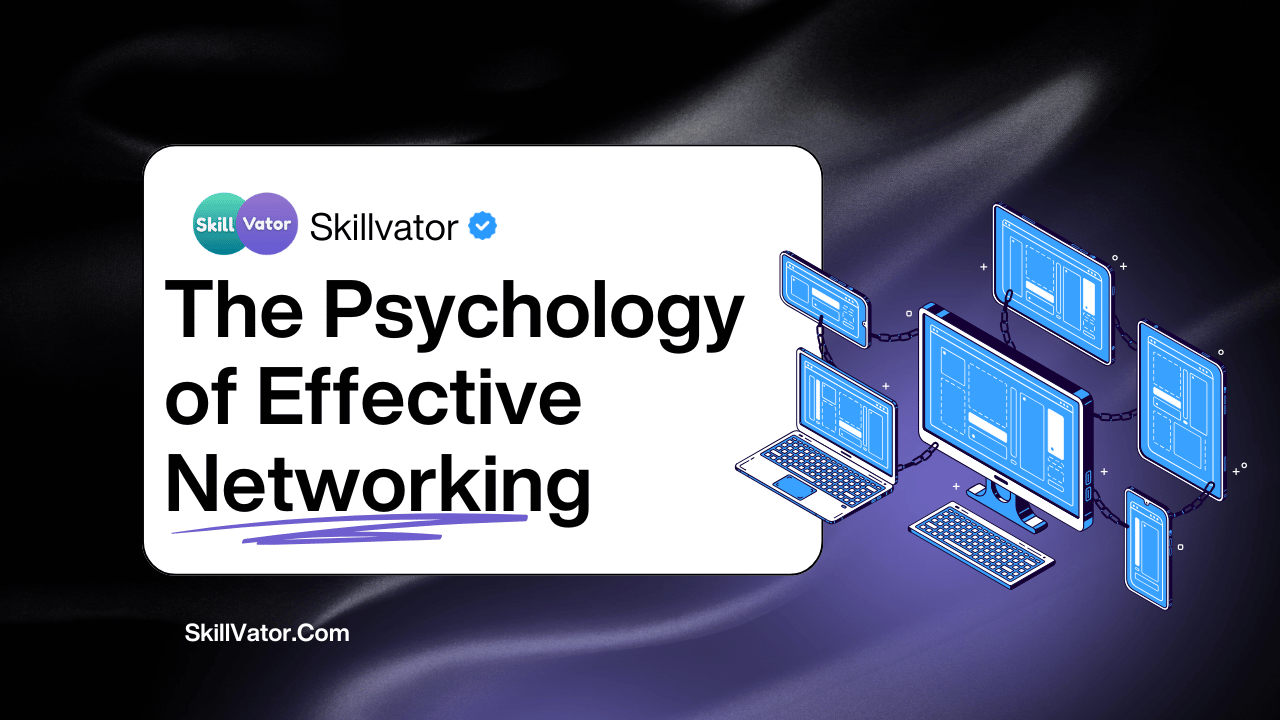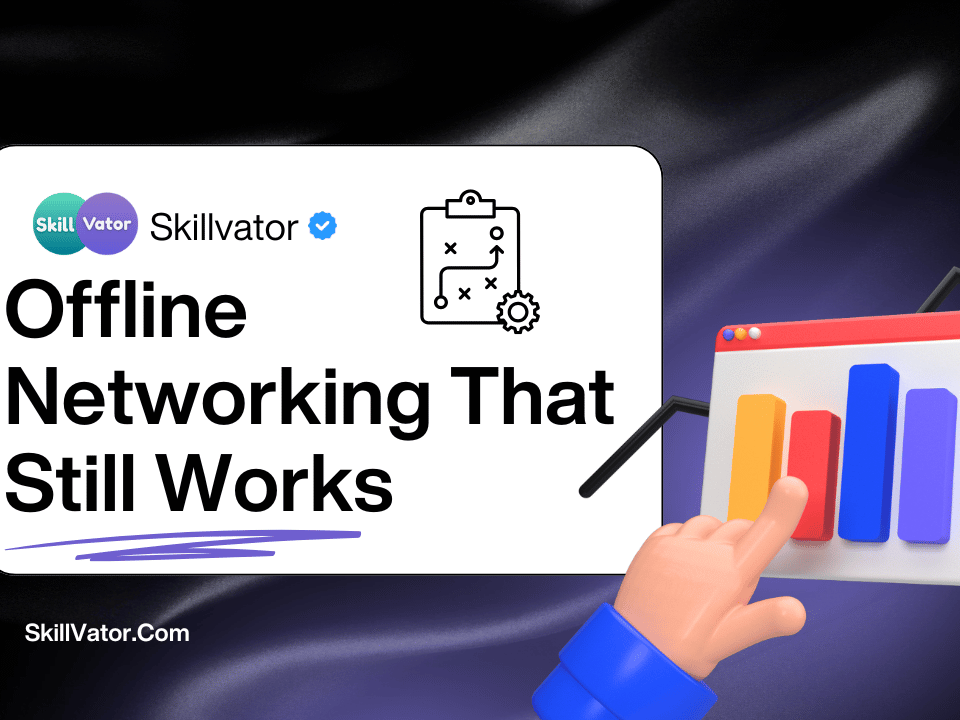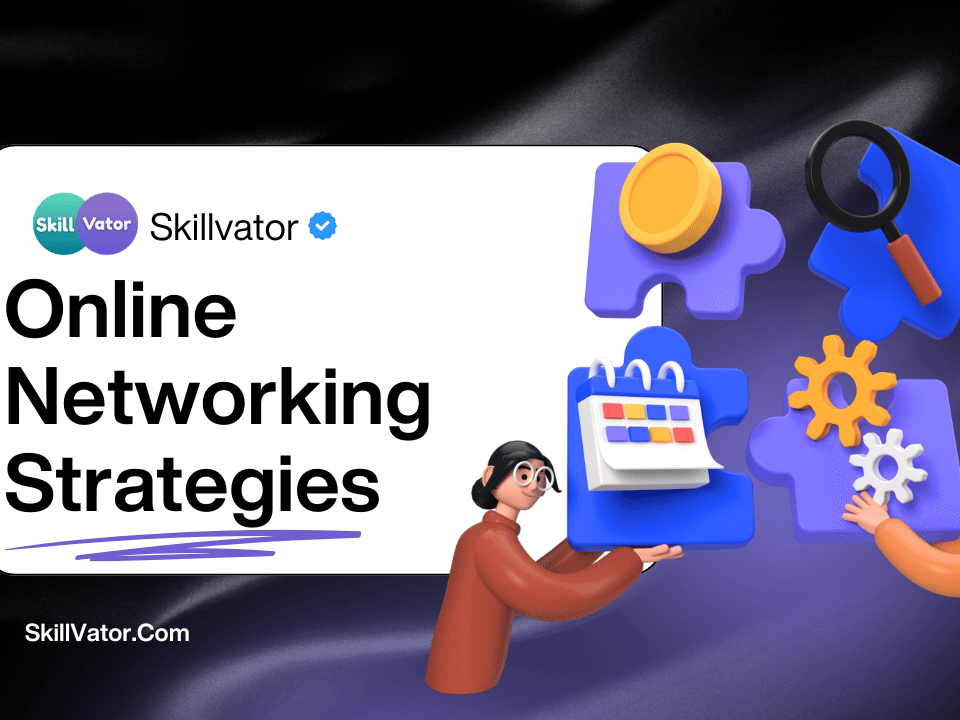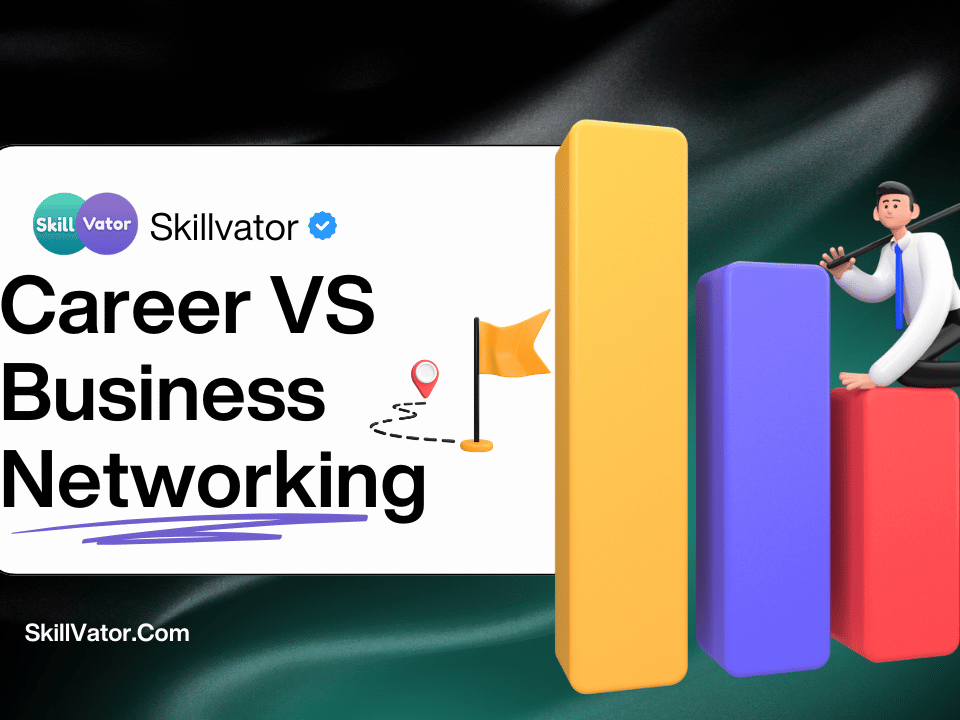When most people hear the word “networking,” they picture awkward mixers, handing out business cards, or sending random LinkedIn requests. But here’s the truth: networking is not just socializing — it’s applied psychology. In this blog post you know everything about Psychology of Networking.
Behind every meaningful professional connection are principles of human behavior that, once understood, can change how you approach building relationships. Effective networking isn’t about collecting contacts; it’s about understanding how people think, feel, and respond — and then using that knowledge to create authentic, lasting bonds.
In this article, we’ll dive into the psychology of networking and explore powerful principles like reciprocity, priming, active listening, and the strength of weak ties. We’ll also go beyond the basics to discuss how emotional intelligence, cognitive biases, and even storytelling shape professional relationships. So if you read this you need Skillvator for you Work Life , so join us and Get me energy < Raha Heydari >
By the end, you’ll have a practical roadmap to turn networking from a stressful chore into a natural, rewarding habit.
The Psychology of Networking and Why Networking Is Applied Psychology ?
Think about it: when you “network,” you’re essentially navigating human behavior. You’re trying to:
-
Be remembered positively
-
Build trust quickly
-
Show value without bragging
-
Influence others to think of you when opportunities arise
This is less about business cards and more about psychological principles like:
-
How memory works (what makes someone remember you)
-
How trust is formed (why active listening works so well)
-
How reciprocity drives relationships (people naturally want to give back)
👉 Networking is not a numbers game. It’s a behavioral science game.
The article “Networking and Relationship Building: Keys to Unlocking Career Success in 2025″ by SkillVator emphasizes the pivotal role of authentic relationships in career advancement. It highlights that opportunities often arise through people—be it a colleague’s recommendation, a client referral, or a LinkedIn connection leading to a business deal.
The piece outlines three foundational pillars for effective networking: trust, value, and consistency. It introduces the “Know-Like-Trust” framework, suggesting that individuals must first be aware of you, then develop a liking for your presence, and finally trust your expertise or integrity. The article also distinguishes between career and business networking, offering tailored strategies for each.
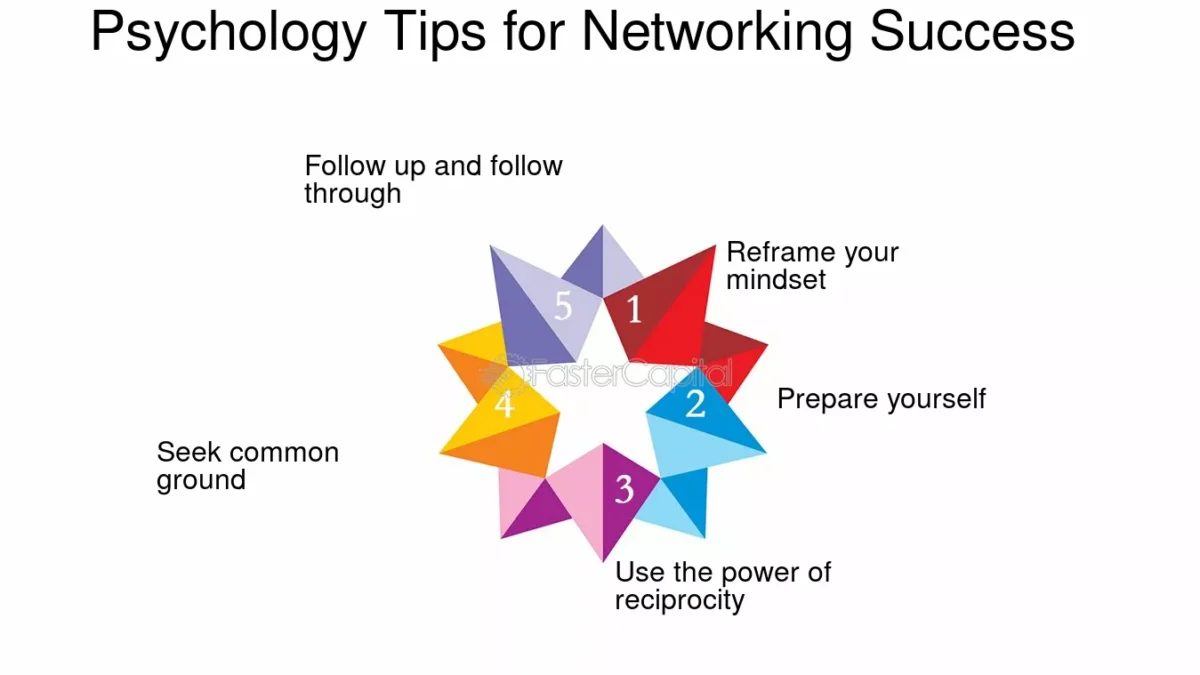
Principle #1: Reciprocity — Give First, Receive Later
One of the strongest drivers of human behavior is reciprocity. When someone gives us something — a compliment, advice, or a resource — we feel a subconscious pull to return the favor.
How to Apply Reciprocity in Networking
-
Share an article, tool, or connection with someone before you ask them for anything.
-
Offer to help: “I know someone who might be a great fit for your project.”
-
Express genuine appreciation: people often underestimate the power of a thoughtful thank-you.
👉 The mistake many people make? They approach networking with a take-first mindset: “Can you help me get a job?” Instead, think: “How can I add value to this person’s world?”
As I often tell Skillvator readers:
“The best networkers aren’t hunters looking for quick wins. They’re gardeners planting seeds of trust that grow over time.” – Raha Heydari
Principle #2: Priming — Be Known for Something
Priming is a psychological concept where exposure to one idea influences how people interpret future interactions. In networking, this means: what you repeatedly share shapes how people perceive your expertise.
Example:
-
If you regularly post about career development tips on LinkedIn, your connections will automatically associate you with expertise in that area.
-
If you’re always the person recommending great books on leadership, you’ll be seen as a thought leader in leadership.
How to Use Priming in Networking
-
Share publicly: Write short posts, articles, or comments about your expertise.
-
Be consistent: The more consistently you show up around one theme, the stronger the association.
-
Tell stories: People remember stories more than bullet points — tell real examples of how you applied your skill.
👉 Priming turns you from “just another contact” into “the go-to person for X.”
Principle #3: Active Listening — The Shortcut to Trust
Here’s something powerful: people feel closer to those who listen well, even more than those who talk brilliantly.
Active listening goes beyond nodding. It’s about:
-
Asking thoughtful questions
-
Paraphrasing to show you understood
-
Paying attention to non-verbal cues
-
Making the other person feel heard and valued
Why This Works Psychologically
Humans crave validation. When someone listens deeply, it triggers feelings of respect and belonging. This not only builds trust but also makes people more likely to remember and recommend you.
Practical Tip
At your next networking event, set a challenge:
-
Spend 80% of the time listening, 20% talking.
-
End the conversation by summarizing what you learned: “So you’re transitioning into data analytics and looking for projects where you can apply your skills — did I get that right?”
👉 That simple recap creates instant trust.
Principle #4: The Strength of Weak Ties
One of the most surprising findings in social psychology and career research is the “strength of weak ties” principle.
Coined by sociologist Mark Granovetter, it shows that casual connections (acquaintances, distant colleagues, LinkedIn connections) often bring the biggest opportunities — not close friends.
Why? Because:
-
Your close circle shares the same information you already have.
-
Weak ties introduce you to new networks, industries, and ideas.
How to Use This in Networking
-
Don’t underestimate the power of casual check-ins: a quick LinkedIn message to an old classmate can lead to a job lead.
-
Attend events outside your usual circle: sometimes the “unexpected” room brings the best opportunities.
-
Nurture your second-layer network: comment on posts, send congratulations, share resources casually.
👉 Weak ties create serendipity — those surprising opportunities that change careers.
Beyond the Basics: Other Psychological Forces in Networking
Now that we’ve covered the core principles, let’s go deeper into the psychology that makes networking truly effective.
Emotional Intelligence (EQ)
EQ is your ability to understand and manage emotions — both yours and others’. High-EQ networkers:
-
Stay calm under pressure
-
Pick up on subtle social cues
-
Know when to listen, when to share, and when to exit a conversation gracefully
👉 EQ is often the difference between a forgettable interaction and a memorable one.
Cognitive Biases at Play in Networking
-
The Halo Effect: If someone perceives you positively in one area (you’re confident), they’ll assume you’re strong in other areas too (smart, reliable).
-
Tip: Show up polished and confident — first impressions matter.
-
-
The Mere Exposure Effect: People like things (and people) they see often.
-
Tip: Stay visible — even light engagement like likes and comments keep you on people’s radar.
-
-
The Scarcity Principle: We value things that seem limited.
-
Tip: Instead of being “always available,” position yourself as busy but generous — it increases perceived value.
-
Storytelling as a Networking Tool
Humans are wired to remember stories, not facts. When you share a quick story instead of just stating your skills, you create emotional connection.
-
Instead of: “I’m good at project management.”
-
Try: “Last year, I helped a team of five deliver a product three weeks early by simplifying our workflow. That’s where I really found my strength in project management.”
👉 People may forget your job title, but they’ll remember your story.
Authenticity vs. Performance
Here’s a critical insight: networking fails when it feels fake.
People sense insincerity. The best networkers aren’t the loudest or the most polished — they’re the most authentic.
Practical steps:
-
Be clear about your goals, but don’t force them.
-
Admit what you don’t know — vulnerability builds trust.
-
Share passions outside of work — authenticity humanizes you.
Practical Networking Strategies Backed by Psychology
-
Prepare Open-Ended Questions
-
“What’s the most exciting project you’re working on right now?”
-
“How did you get started in your field?”
-
-
Use the “Name Memory Trick”
-
Repeat someone’s name naturally in conversation. It strengthens connection and shows attentiveness.
-
-
Apply the Rule of Three
-
After meeting someone, follow up three times:
-
Within 24 hours — thank you note
-
Within a week — share a resource
-
Within a month — reconnect with an update
-
-
-
Leverage Online + Offline Networking Together
-
Meet someone at an event → connect on LinkedIn → engage with their posts → invite to coffee chat.
-
People Also Ask (FAQs)
1. Why is psychology important in networking?
Because networking is essentially human interaction, and psychology explains how trust, memory, and influence work. Applying psychological principles helps you build stronger, more authentic connections.
2. How can reciprocity improve networking?
When you give first — whether it’s advice, resources, or encouragement — people naturally feel compelled to return the favor. This builds goodwill and long-term trust.
3. What is the strength of weak ties in networking?
It’s the principle that casual connections often provide more opportunities than close friends because they connect you to new networks and information.
4. How do I use priming in networking?
Consistently share insights or stories about your expertise. Over time, people will associate you with that skill, making you top-of-mind when opportunities arise.
5. Can introverts be effective networkers?
Absolutely. Introverts often excel because they’re great listeners — and active listening is one of the most powerful networking tools.
Conclusion
Networking is not just socializing — it’s applied psychology. The most effective networkers understand that success comes from giving before receiving, being remembered for a skill, listening deeply, and nurturing both strong and weak ties.
When you combine these psychological principles with authenticity and consistency, networking stops feeling forced. It becomes a natural, rewarding part of your professional journey.
As I always say at Skillvator:
“Networking isn’t about building the biggest circle; it’s about building the right circle — with trust, psychology, and purpose at its core.” – Raha Heydari, Founder of Skillvator


